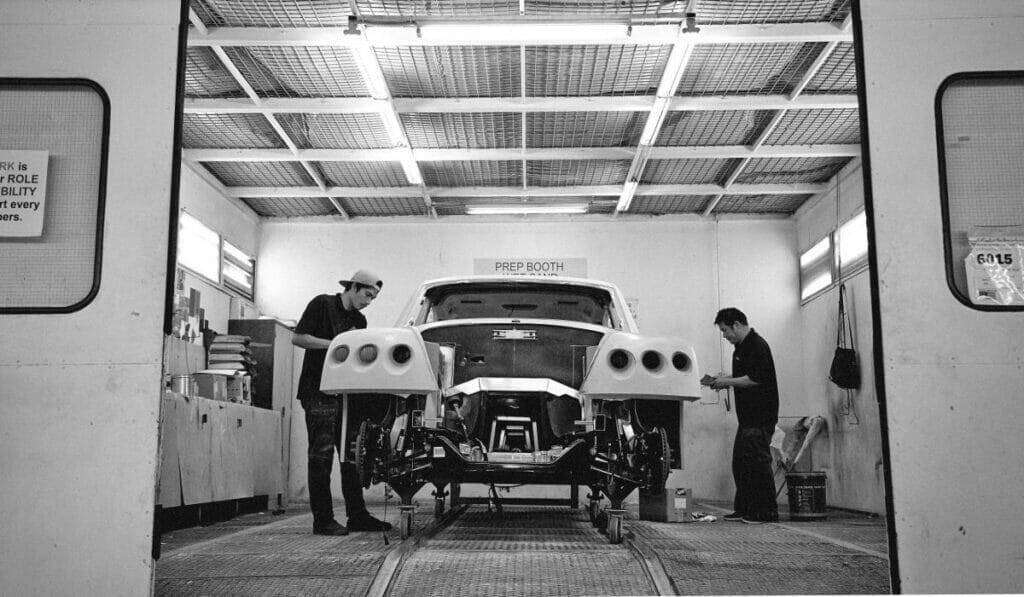“When I first told people I was going to build my own car, they said I was crazy. They said, ’Who do you think you are? Henry Ford?’ But when I finished it, everyone wanted to be my friend again.†This was the beginning for Gerry Khouri and the Bufori Motor Car Company. What started as a desire to build a car with his own hands soon turned into a business and, today, even though we don’t really hear about what the marque does, Bufori is making some of the most bespoke cars in the world, all completely by hand and right here in our own backyard.

Gerry Khouri the founder of Bufori
Even though each Bufori car is handcrafted, they come out of the factory to the highest of standards. These cars are more than just a body shell mounted onto an engine and transmission; each one is built to European safety standards and packed with so much technology that they put most machine-assembled rides to shame. The chassis of the cars are built with carbon Kevlar, a process that, Khouri tells me, even some big automobile houses can’t replicate. But you wouldn’t be able to tell by walking through Bufori’s factory floors. There is a stark absence of robotic arms and hydraulic machinery. Instead, what you find are teams of people – craftsmen – painstakingly putting the car together, and making sure that each and every detail is just as it is meant to be.
This is exactly the vision Khouri had when he turned his ability to build a car with his own hands into a thriving business. As the story goes, the first car Khouri built was in the backyard of his home in Sydney, Australia. It was so popular that Khouri started renting it out for people to drive during the weekends, and for engagement parties, honeymoons and graduation ceremonies. Khouri’s two brothers each wanted a car as well, so Khouri opened up a small workshop to build them, but, each time he finished one, somebody would buy it, and it was only 16 years later that his brothers got get their own Buforis.
Within a year of building his own car, Khouri had established the Bufori Motor Car Company and, until today, is still focused on building bespoke vehicles. “We are not interested in building a car that you can walk into a showroom, pay a certain amount of money and drive one out,†explains Khouri. “When you think about the Paganis and Koenigseggs, they say they have a small production of 250 cars a year. We don’t even do 250 of the same model.†That’s the type of exclusivity you’ll get with Bufori, which you won’t hear about if you don’t ask.
‘Handcrafted in small numbers, catering to a very niche group of connoisseurs’ doesn’t sound like the type of business that would have thrived in Malaysia and, yet, Bufori has been operating here for the past 25 years. Back in the early 1990s Bufori was still based in Australia but the bulk of its customers came from parts of South-East Asia, Korea and Hong Kong. So, when the Australian government changed its policy on the exporting of vehicles, the company really had no incentive to stay. The then Yang di-Pertuan Agong HRH Tuanku Ja’afar and then Prime Minister Tun Dr Mahathir Mohammad both expressed support for the marque, saying that they wanted a product like Bufori to be Malaysian-made, which convinced Khouri to move its base of operations to Malaysia.
That was in the early to mid- 1990s but, these days, Khouri says: “Malaysia is the hardest country to do what we’re doing.†And the reason for this is that because of the small volume of cars Bufori produces each year, it doesn’t get any recognition and support from the Malaysian Automotive Industry.
Additionally, they are finding it extremely hard to hire craftsmen locally (Khouri says it was easier to hire 20 years ago). “Nobody wants to hand sand the body of a car anymore; they would rather stand there and monitor a robot doing the work. Even the woodwork, bookmatching and lining up all the veneers to be perfectly aligned – nobody wants to do that anymore. The younger generation are not interested.†And for a business that is so dependent on artisanal crafts, this represents a major problem for its growth. “Our demand is far greater than our capacity. But we can’t grow because the capacity is limited by our manpower. The only solution I have for now is to train my own people. If I can find people with a good attitude and are willing enough to learn a new way of doing things, I will invest money in training them,†Khouri continues.
What, I ask then, is keeping Bufori here? Khouri’s answer is simple: “It is because of the people. We sent some of our very first employees to Australia for training and they are still with us today, 25 years later. And the tremendous amount of loyalty these guys have shown us is what keeps us here.†bufori.com
ART DIRECTION PENNY CHEW
PHOTOGRAPHY ROBIN LIEW & BUFORI MOTOR CAR COMPANY



